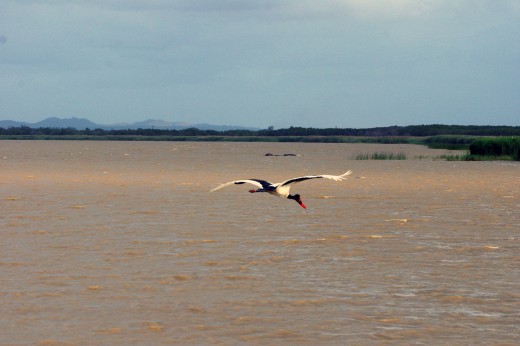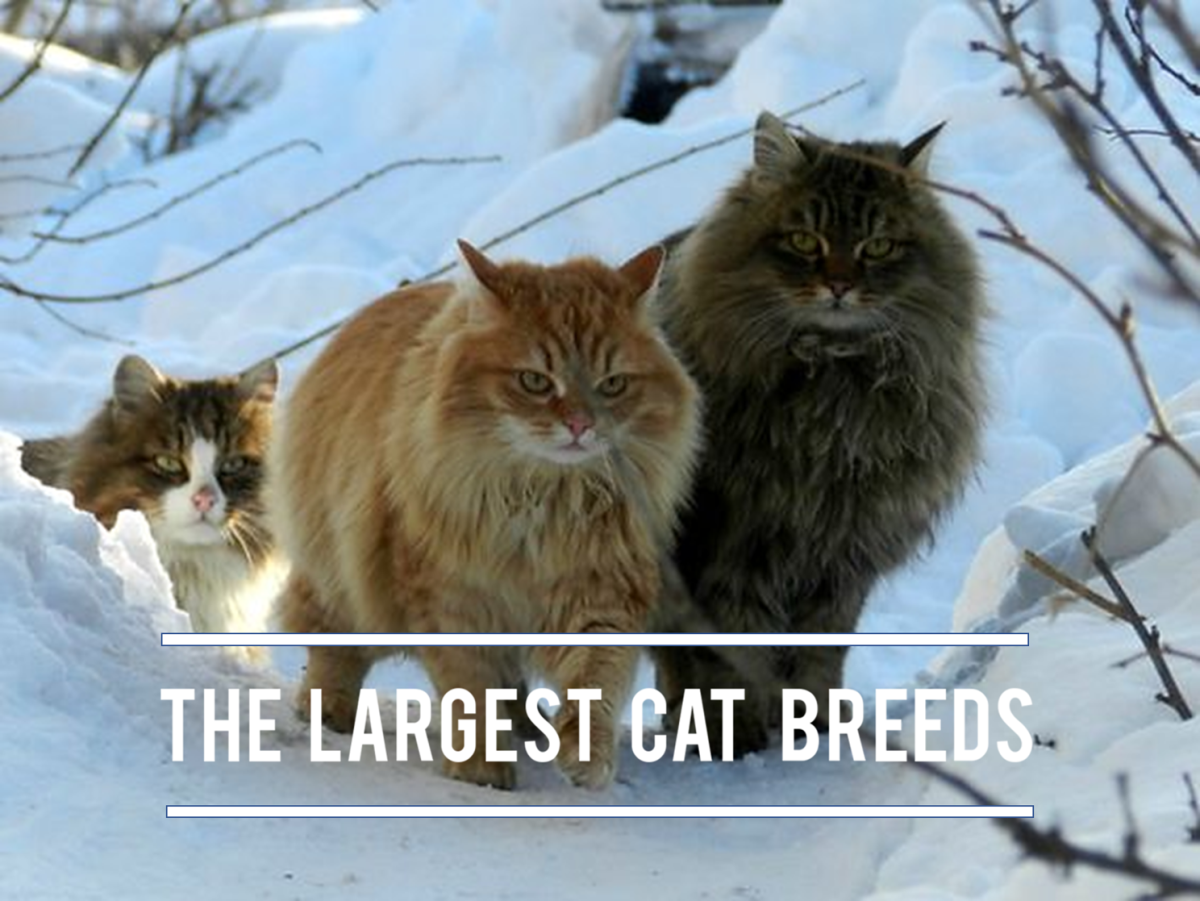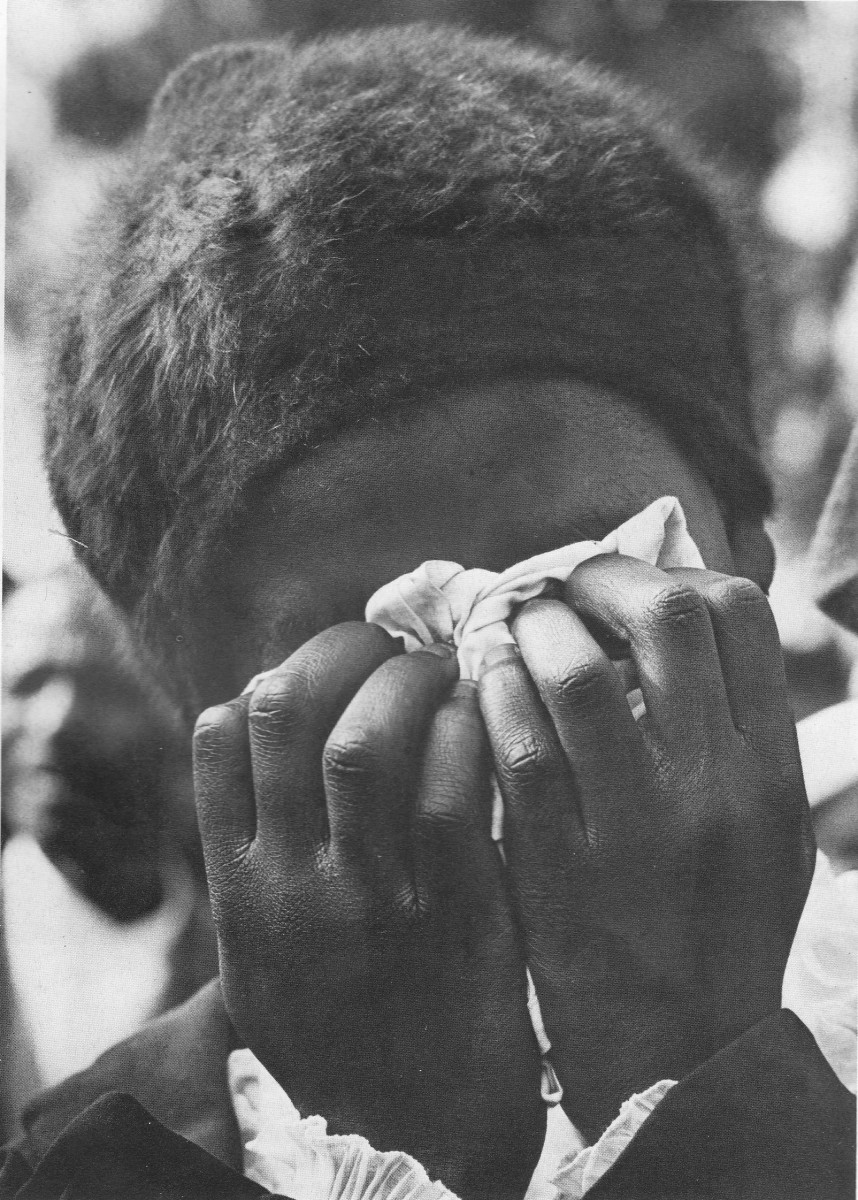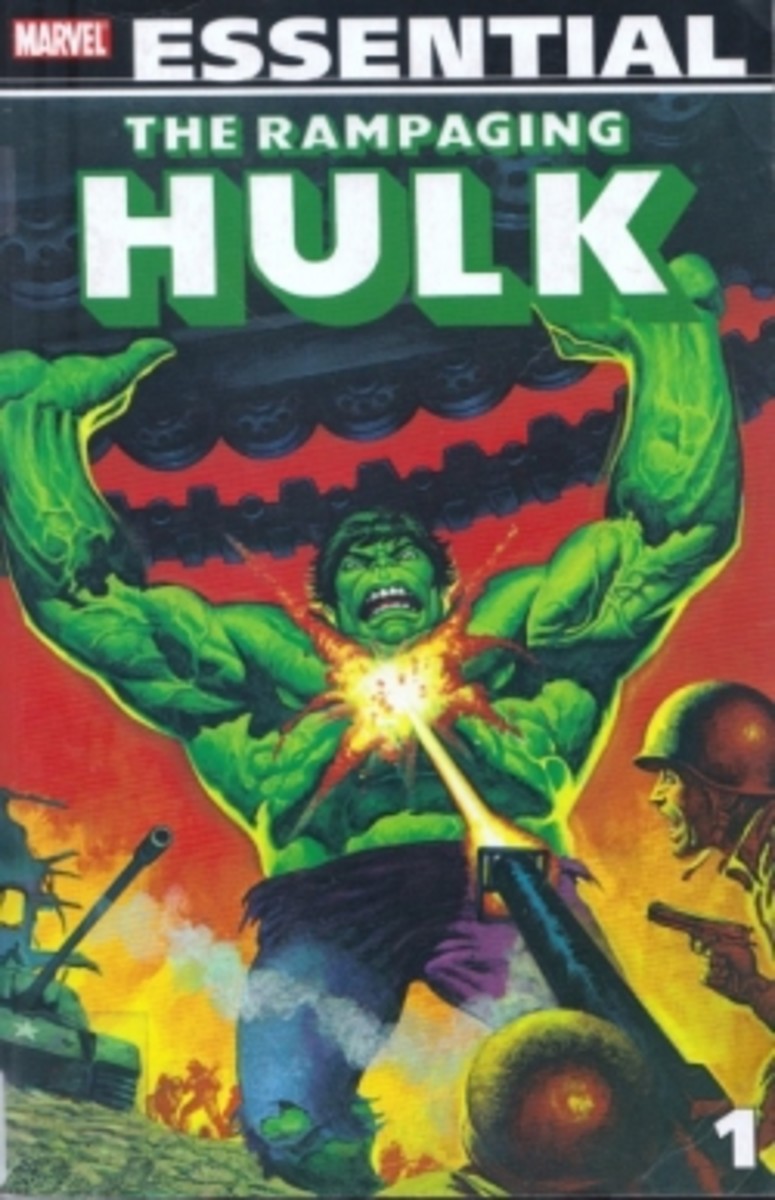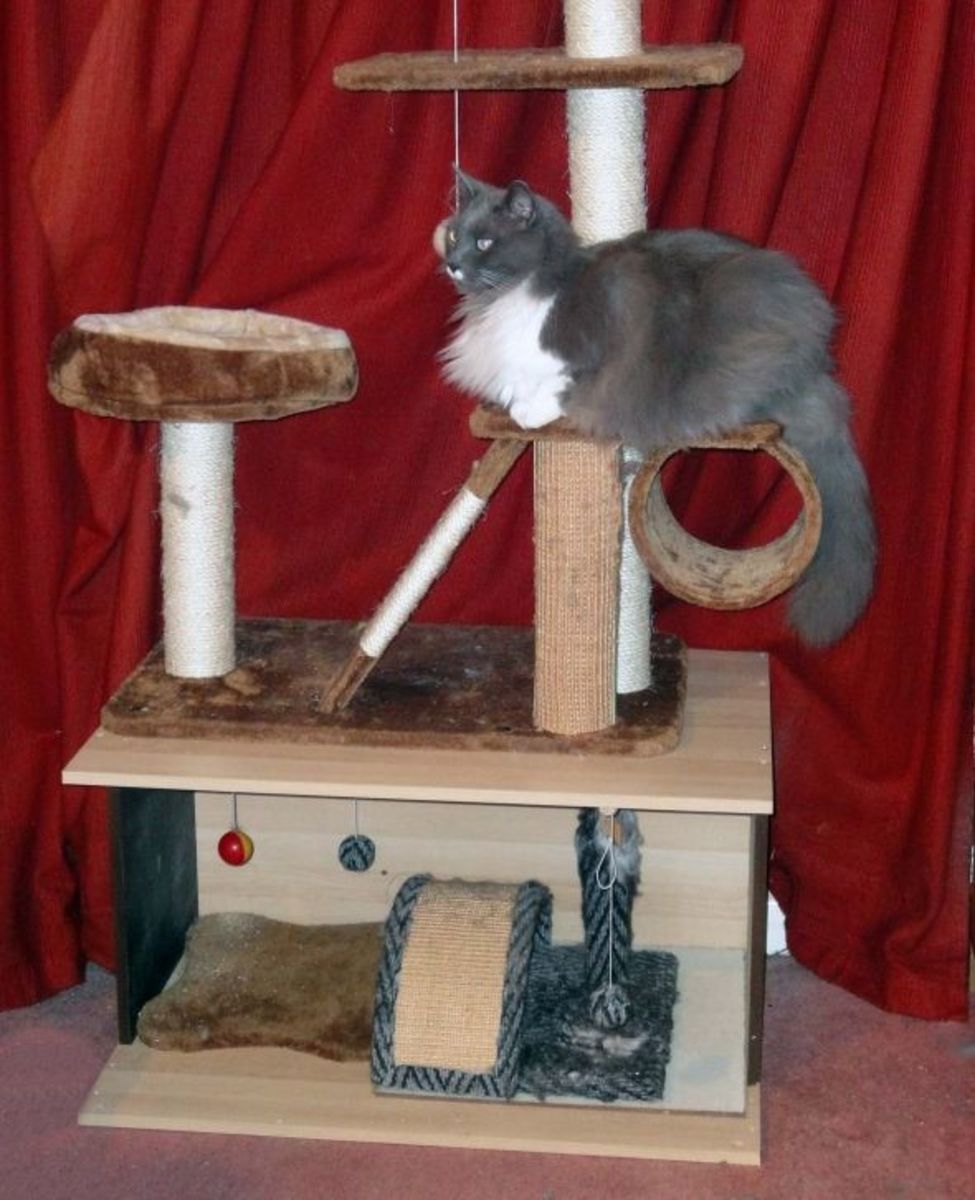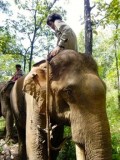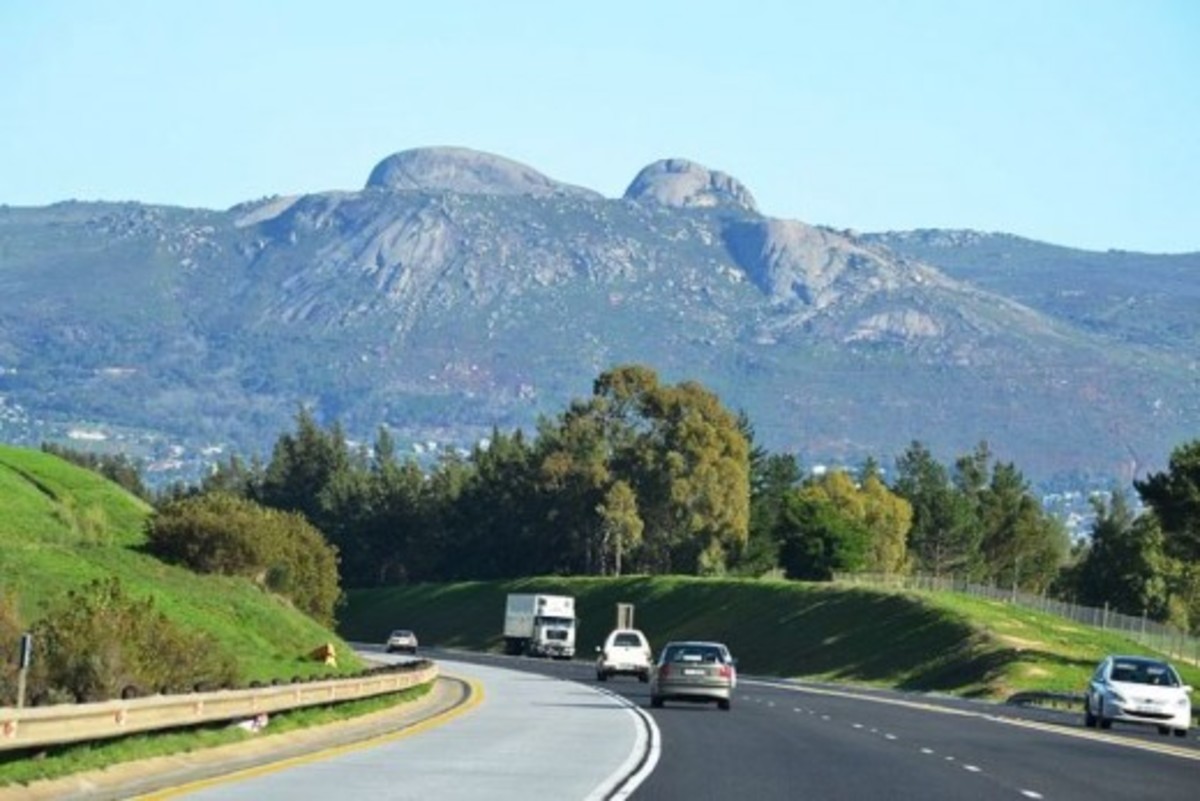- HubPages»
- Travel and Places»
- Visiting Africa»
- Travel to Southern Africa
Rampaging Hippos, Rare Big Cats and Wacky Wildlife: South Africa's North-East Coast
The wonders of South Africa's north-east coast
Get close to rare African wild cats, caracals, servals and cheetahs at Emdoneni Cat Rehabilitation Centre
Set up in 1895, this is South Africa's oldest game reserve and has one of the world's largest white rhino populations, now threatened by poaching.
Hippos from nearby World Heritage-listed Isimangaliso Wetland Park roam through this town at night, 'mowing' residents' lawns.
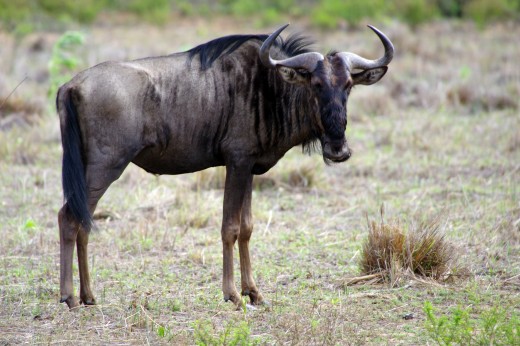
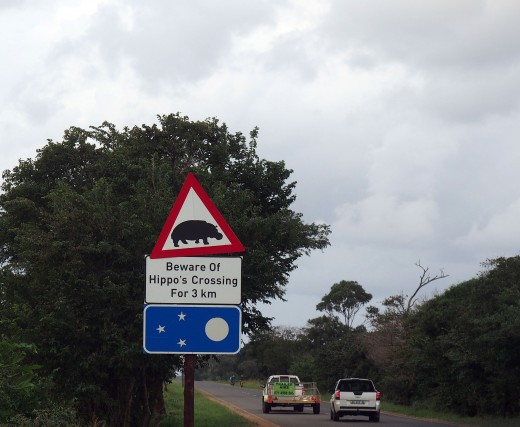
Getting there
The attractions on this hub page are in South Africa's Kwazulu Natal province about 2 hrs north of Durban along the N2 major highway. Saint Lucia lies in the south of World Heritage-listed Isimangaliso Wetland Park. Mkuze Game Reserve, the subject of my next hub page, is at the northern end of this amazing park.
- The easiest way to get to where you want to go is to hire a car from Durban or Johannesburg.
- You can organise a shuttle from one of the many tour companies in Durban to a lodge that offers tours. Lodges with activities include Emdoneni Lodge at the cat rehabilitation centre, Hilltop and Mpila lodges in Hluhluwe-Imfolozi National Park and Kwalucia Private Safari Retreat in Saint Lucia. This is not a comprehensive list: check out Google for deals or consult Trip Advisor or Booking.com.
- Base yourself in a town and organise tours or transport from there. Get a bus to Richards Bay from Durban, then a taxi to Hluhluwe for easy access to Emdoneni Cat Rehabilitation Centre and the Hluhluwe section of Hluhluwe-Imfolozi National Park.
- To spend more time in Saint Lucia or the Imfolozi section of Hluhluwe-Imfolozi National Park, get a bus to Richards Bay from Durban then a taxi to Saint Lucia.
- You could also base yourself in the harbour town of Richards Bay.
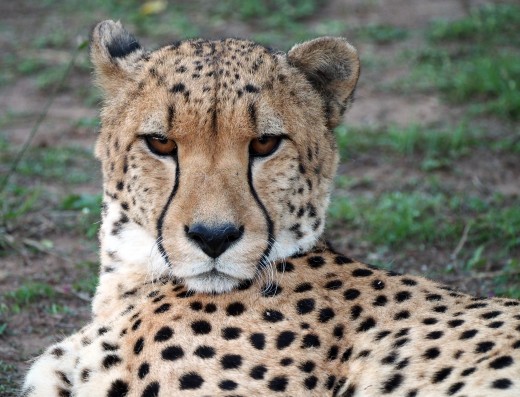
Help save Africa's big cats
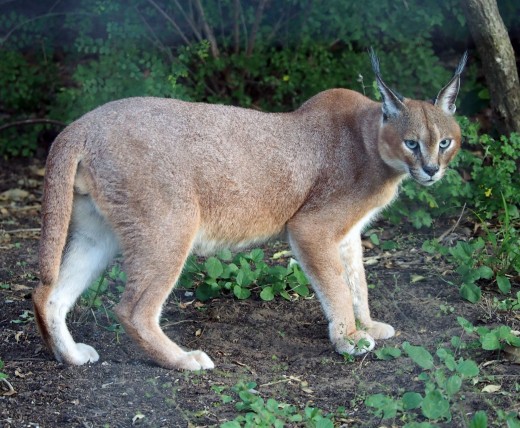
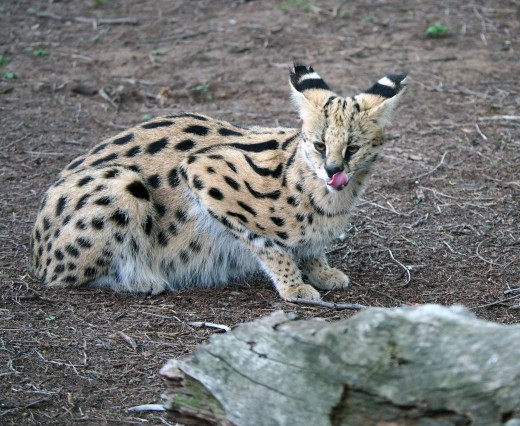
About Emdoneni Cat Rehabilitation Centre
Emdoneni Cat Rehabilitation Centre rescues animals from the pet trade or injured wild animals who can no longer survive in the wild, and places them in large enclosures that reproduce their habitats as much as possible. Four of the seven big cats species in Africa are represented:
- African wild cat
- serval
- caracal
-
cheetah.
Visiting the centre
The centre runs educational tours for visitors at 10.30 am and 4.30 pm. Book in advance as visitor numbers are limited to 75. A guide gives an informative and fun talk on each animal. You can enter some enclosures and stroke tamer big cats if they are in the right mood.
The animals are encouraged to breed and their young are generally released into the wild. When we were there, four cute baby servals were being kept away from visitors so they would be prepared to survive in a national park or reserve once they were old enough to leave their mother.
On a visit, you can:
- see and interact with big cat species that are shy and secretive and rarely seen, with the exception of the cheetah, in the wild
- find out about the behaviour and habits of these beautiful animals from entertaining, knowledgeable guides
- discover what is being done to conserve these big cats in South Africa
- adopt an animal, meaning you give a donation to the species of your choice.
More information
Emdoneni's big cats
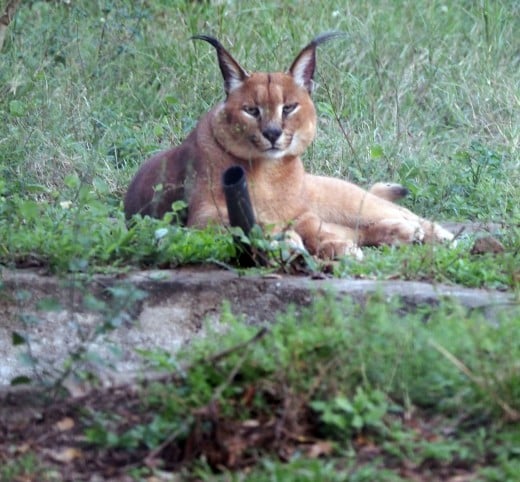
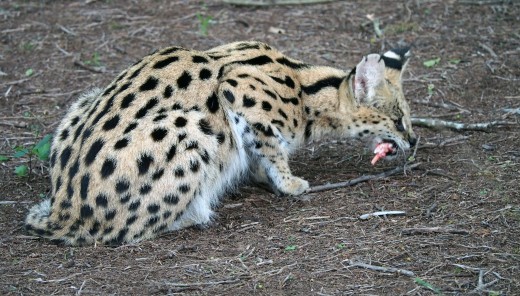
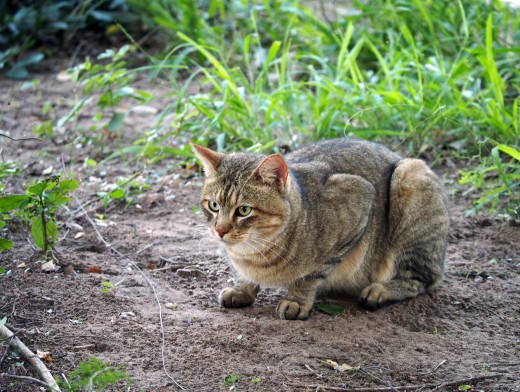
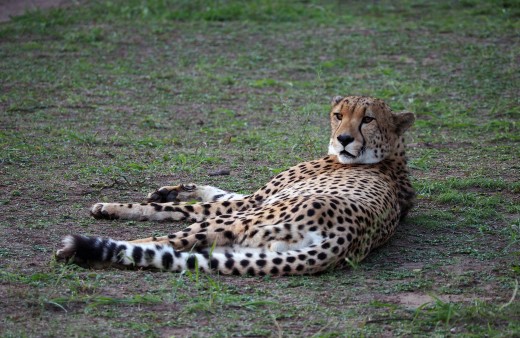
QUIZ: Which big cat are you?
Are you a wily African wild cat, a resilient serval, a tactical caracal or an athletic cheetah?
A. Which landscape do you prefer?
- rocky arid scrub
- savanna
- mountains
- wetlands
B. Your philosophy is
- patience is a virtue
- fight for what you want
- carpe diem: seize the day
- live and let live
C. People admire your
- independence
- adaptability
- resourcefulness
- laid back attitude
D. Your biggest failing is
- I don't face up to problems, I avoid them
- I'm too secretive
- I'm too aggressive
- I give up too easily
E. Your best quality is
- you play well with others
- your patience
- your independence
- your charisma
F. Your ideal career would be
- CEO of an organisation
- journalist
- detective
- own your own business
G. Have you ever been picked on or bullied?
- yes
- occasionally, but I try and avoid bullies
- just let them try
- people have tried to bully me, but I fight back and they leave me alone
H. If you could look any way you wanted, would you have
- red hair and green or blue eyes
- dark hair and hazel eyes
- light blonde hair and long legs
- dark blonde hair and a sleek body
I. You like clothes
- in neutral colours, black or brown
- with patches and stripes
- with lots of dots
- in one bright colour
J. In a past life
- you were the power behind the throne for a ruler
- you were a sprinter in the ancient Olympic games
- you were a high priest or priestess for a mysterious cult
- you travelled far and wide, having adventures
Get your score
Add up the numbers based on what you answered for each question.
A. 1 = 3; 2 = 2; 3 = 0; 4 = 1 B. 1 = 1; 2 = 3; 3 = 2; 4 = 0 C. 1 = 0; 2 = 1; 3 = 3; 4 = 2
D. 1 = 1; 2 = 0; 3 = 3; 4 = 2 E. 1 = 2; 2 = 1; 3 = 0; 4 = 3 F. 1 = 3; 2 = 2; 3 = 1; 4 = 0
G. 1 = 2; 2 = 1; 3 = 3; 4 = 0 H. 1 = 3; 2 = 0; 3 = 1; 4 = 2 I. 1 = 0; 2 = 1; 3 = 2; 4 = 3
J. 1 = 1; 2 = 3; 3 = 2; 4 = 0
Totals
- If you scored a total of 0 - 7, you are an African wild cat. Ever alert and independent, you are also brave and fierce. People can underestimate you as you are amiable, look cute and appear harmless but if they attack you, they will get a surprise.
- If you scored a total of 8 - 15, you are a serval. Amazingly adaptable and resilient, you are also patient and perceptive which makes you good at problem solving. Gentle yet strong, you don't like conflict but can stick up for yourself if you need to.
- If you scored a total of 16 - 23, you are a cheetah. Sociable and communicative, you get on well with others. People can take advantage of your laid back nature, but if there is something you really want you go after it single-mindedly.
- If you scored a total of 24 - 30, you are a caracal. You are passionate, resourceful, graceful and exotic. Powerful yet playful, you can overcome challenges others would quail at and have a sense of mystery others find enticing.
Now find some fun facts about your animal
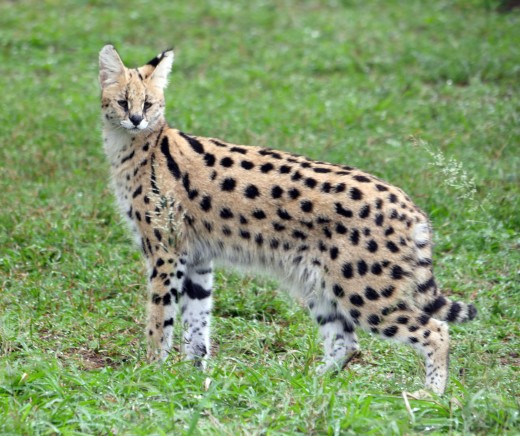
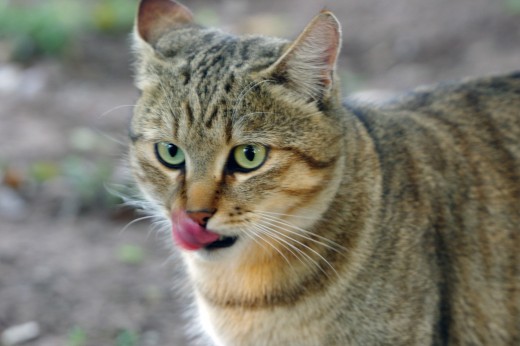
Fun facts about the big cats
African wild cat Felis silvestris lybica
- The African wild cat was honoured by the Ancient Egyptians, as it killed rats and mice in their granaries. This species appears on ancient Egyptian bronze mummy cases and tomb paintings.
- This species is the ancestor of the domestic cat.
- Pure African wild cats have heavier and longer legs than domestic cats. When the wildcat is sitting upright, its long front legs raise its body into an almost vertical position,which is almost impossible for domestic cats
- Like domestic cats, African wild cats stalk and pounce on their prey which consists mainly of rodents, but they will eat other small mammals such as hares, birds and insects.
- Nocturnal, African wild cats will hide during the day among rocks, in caves or in burrows dug by other animals. They can climb trees but prefer to stay on the ground.
- To communicate for mating purposes, the African wildcat urinates on trees. Females may spray up to 50 times per night, while males spray about 183 times a night.
- African wild cats may be little but they are also fierce and will fight predators larger than themselves. Although they are vulnerable when young to foxes, wolves, cats and birds of prey, once mature, predators leave them alone.
- Secretive and independent, African wild cats thrive in a variety of habitats from mountainous to forested to semi-desert areas.
- True survivors, cubs reach maturity early. Their eyes will normally be open by within a fortnight and they will begin to walk by three-weeks-old They start hunting at three-months-old and are mature within a year.
- Despite their ferocity, African wild cats are vulnerable because they thrive in urban environments where there are many rodents, where there is competition from feral cats that spread diseases, and domestic cats they breed with.
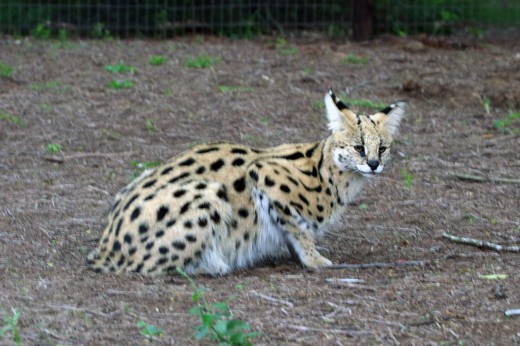
Serval Leptailurus serval
- The name 'serval' comes from the Portugeuse word 'cerval', meaning 'deer-like'.
- Servals have the longest legs of all cats relative to their size. They can leap into the air to catch birds, frogs and fish by pressing their paws together and chopping them downwards; reach a leg down into a rodent's burrow; and easily hunt in long grasses.
- Servals are not fussy: they will eat birds, frogs, rodents, small mammals, fish and reptiles. They can hunt by day or night, walk up to 6 kilometres a night if prey is scarce and wade into water to catch fish with their long, curved claws.
- With their large ears and ultrasonic hearing, servals hear the high-pitched communication of rodents and other prey.
- Their hunting success rate averages 48%, higher than that of most other cat species.
- Servals need to drink a lot of water so prefer marshy or wetland habitats, but will also live on savannas and in woodland.
- These cats will run away and hide or escape by climbing trees rather than fight predators, and the markings on their fur mean they are well-camouflaged in tall grasses.
- Preferring to stalk rather than chase after prey, servals pause for up to 15 minutes at a time to listen.
- Servals' soft beautiful fur was made into cloaks for Zulu chieftains and is still prized for tribal rituals, meaning the animal is heavily poached.
- Although generally coming together only to mate, a male and female serval will occasionally travel, hunt and rest together for short periods. Adult male servals have also been seen resting together.
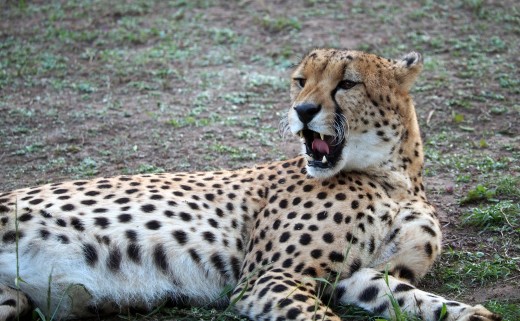
Cheetah Acinonyx jubatus
- Cheetahs are the fastest land mammals in the world, reaching speeds of up to 120 kilometres (74 miles) an hour. They can range from 0 to 96 kilometres (60 miles) an hour in three seconds, but can sprint at maximum speed for only a few hundred yards or metres before tiring.
- To help them turn and change direction at speed, cheetahs use their tails to steer like the rudders of boats.
- Unlike other big cats, cheetahs have semi-retractable claws like spikes on an athlete's track shoe.
- The word 'cheetah' is taken from the Hindi word 'chita', meaning 'spotted one'.
- Cheetahs only need to drink every few days so can survive in dry areas. They prefer open plains with grassland cover.
- Cheetahs hunt during the day rather than at night, unlike most big cat species. They have bad night vision and cannot climb trees.
- Female cheetahs are solitary except when mating or raising cubs. Cubs will stay with their mothers for up to two years. Male cheetahs live in groups of two or three with their brothers. These groups are called 'coalitions'. Living in coalitions helps cheetahs gain territory.
- Although they cannot roar, cheetahs are very vocal. They chirp like birds and each cheetah has a different chirp, meaning they could recognise each other by their chirps alone. Females chirp to announce they are ready to mate. Males chirp when separating from their coalition and when being reunited. Females and their cubs chirp for the same reasons.
- Cheetahs are not aggressive except when hunting. They rarely fight each other or other animals. They lose 50% of their kill to lions, hyenas and groups of vultures who chase them away from their meal.
- Because of their peaceful nature, cheetahs are preyed on by larger animals and humans and are considered 'vulnerable' to extinction in the IUCN red list.
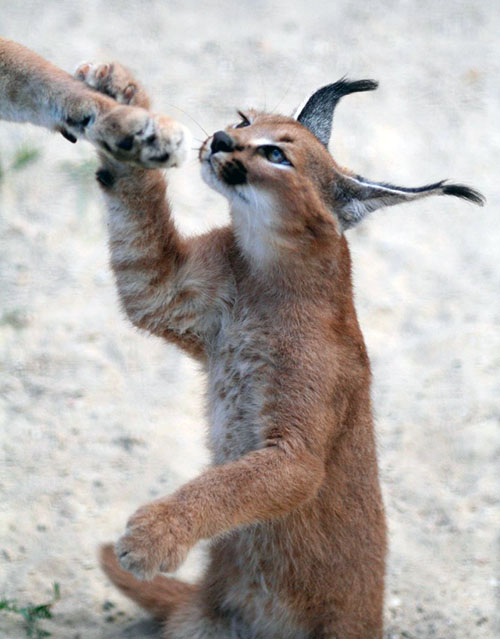
Caracal Caracal caracal
- Of these four cat species, the caracal is the most efficient predator as it has powerful jaws to overwhelm and subdue,and long legs to leap on, its prey. It can even leap 3 metres (10 feet) into the air to catch birds in flight by batting them with its large paws.
- The name 'caracal' comes from the Turkish word 'karakulak', meaning 'black ear'.
- A playful entertainer, the caracal was trained in the Middle East to catch pigeons, and it is thought the term 'put a cat among the pigeons' comes from this practice.
- This exotic big cat had religious significance in Ancient Egypt, and has been found in paintings and is the subject of sculptures in some tombs.
- This beautiful animal uses its distinctive ears to communicate with other caracals. When still at a distance from each other, caracals will make head and ear movements to signal status, identity and intentions, such as the desire to mate.
- Caracals have 20 different muscles in their ears to detect prey.
- Preferring dry rocky habitats, caracals do not need to drink water very often.
- They generally shelter in crevices, behind rocks or up trees during the day and hunt during the night, but in some areas they are active during the day too.
- Caracals will attack animals that are bigger than they are such as eagles and antelope, even ostriches, but not human beings.
- Their resilience and resourcefulness have enabled them to survive persecution across their broad range across Africa, India and the Middle East, and despite being rarely seen they are not endangered.
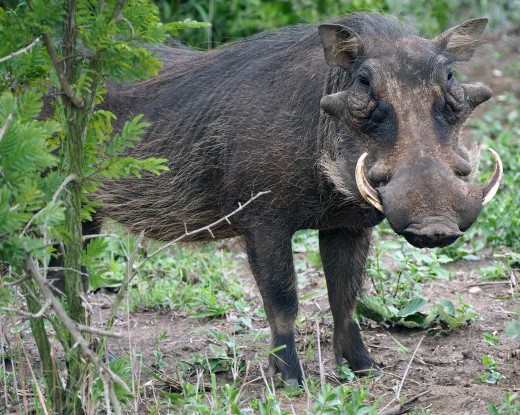
Hluhluwe-Imfolozi National Park
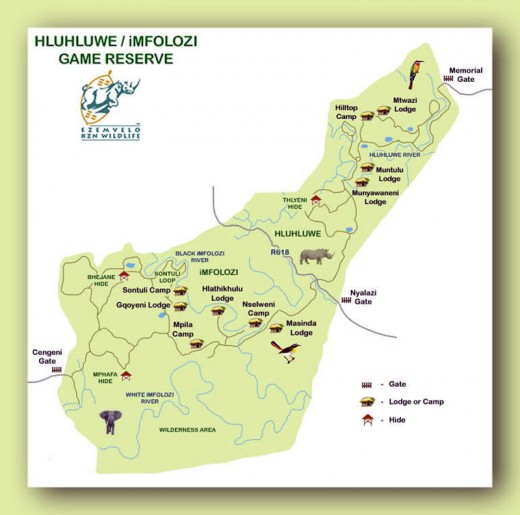
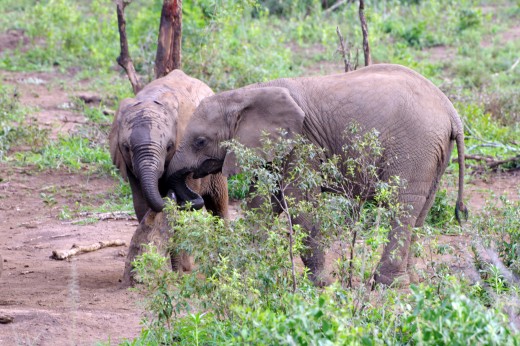
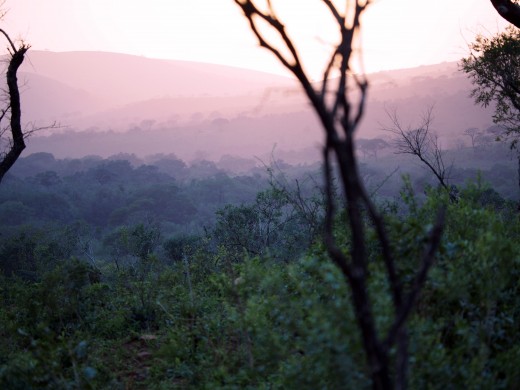
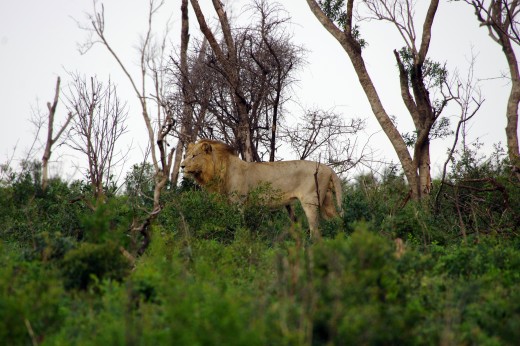
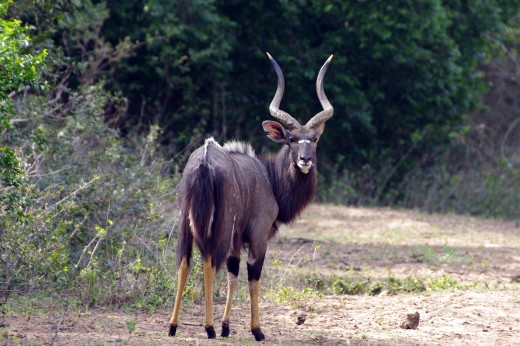
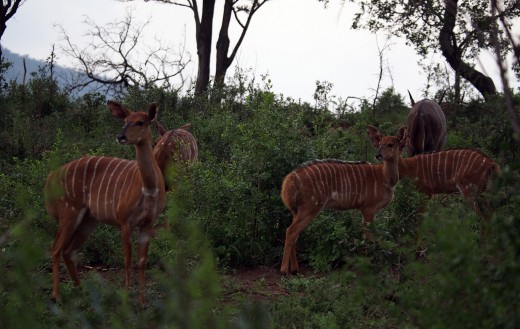
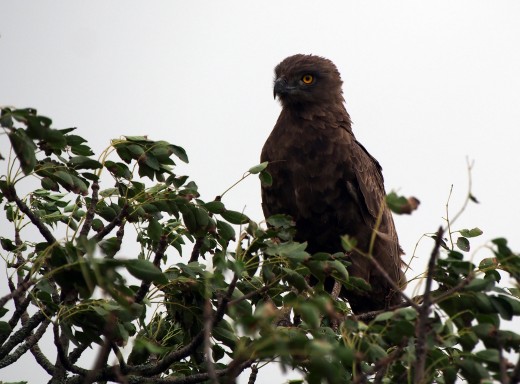
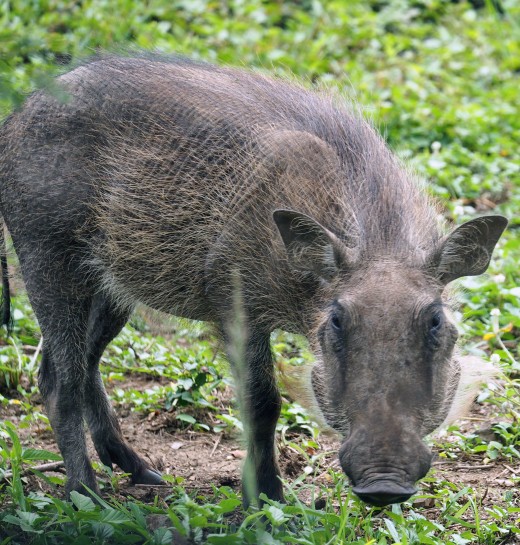
Top ten facts about Hluhluwe-Imfolozi National Park
- Hluhluwe-Imflozi is the oldest game reserve in South Africa, established in 1895 for the entertainment of Zulu chieftains.
- The national park covers a total of 96,000 hectares and consists of Hluhluwe reserve in the north and Imfolozi in the south. Hluhluwe is hilly whereas Imfolozi contains more open grassland. We visited Hluhluwe on safari and had a splendid time.
- You can see all the Big 5 in the park. We saw lions, buffalo and elephants but not leopards or white rhino. There are plenty of other amazing animals to see, including the cat species seen in Emdoneni Cat Rehabilitation Centre (see above).
- Because of the variety of habitats, more than 300 species of birds have been recorded. Hluhluwe River floodplain is one of the only areas in the whole of South Africa where yellow-throated, pink-throated and orange-throated longclaw can all be seen.
- Hluhluwe-Imfolozi is the basis of Operation Rhino, a project began in the 1950s to conserve the white rhino. There is now a healthy population of these animals in the park.
- There is a great deal to do. Choose from day and night safaris, self-driving trails with picnic areas and hides overlooking the river, bird watching tours and guided walks. There are three self-guided walks in the Imfolozi section of the park, and boat tours on Hluhluwe Dam.
- There are four wilderness trails in Imfolozi from 2-4 nights long based in the pristine 25,000-hectare wilderness area in the park's south-east. Two staff members lead all walks with access being only on foot. We did not have time to do one of these but they look smashing.
- There is accommodation to suit all budgets and much of this offers activities in the park as part of the package.
- Because it is easy to gain access to this park from all sides, there is a huge problem with poaching, especially of rhinos. When we were there we heard elephants trumpeting in alarm and other alarmed animal sounds, and a helicopter piloted by a ranger flew overhead. Our guide said although poachers were caught, more kept coming. It's really sad.
- To finish on a high note, conservation and education are central to the park's activities and the knowledgeable guides can tell you a great deal about current conservation projects in the park.
The animals of Hluhluwe-Imfolozi National Park
St Lucia
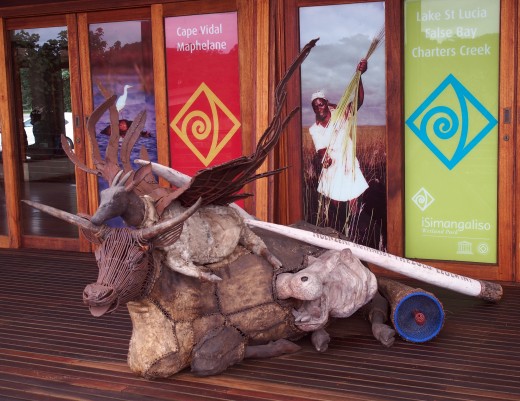
Home of hippos
St Lucia is a pretty little town at the south end of World Heritage-listed Isimangaliso Wetland Park. It is surrounded by an extensive area of bush, wetland, dune and beach and an estuary that has been closed off from the sea for 8 years. Warthogs wander aimlessly through the town by day and hippos visit at night. They are light-footed for their size and just nibble the tips of grasses so are great lawn mowers.
There is a great deal to do in this friendly, colourful town surrounded by natural beauty.
Hippopotamus (Hippopotamus amphibius)
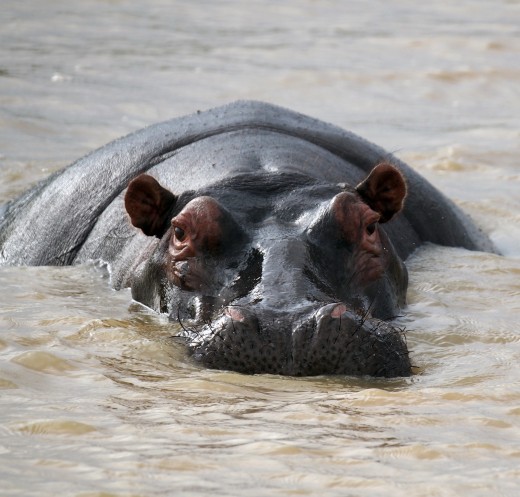
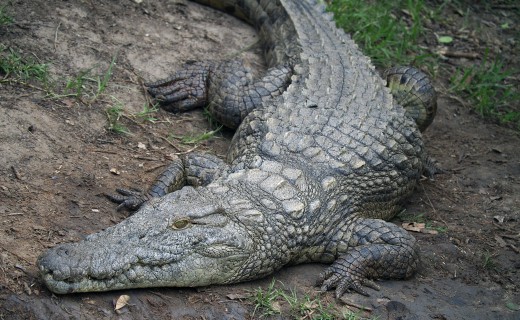
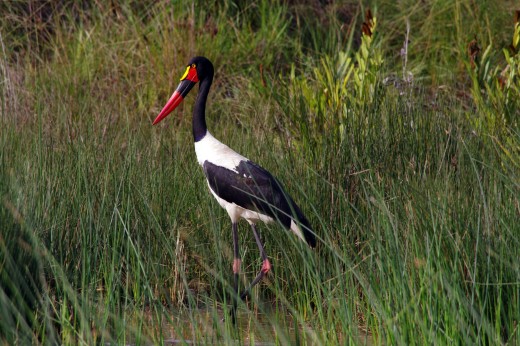
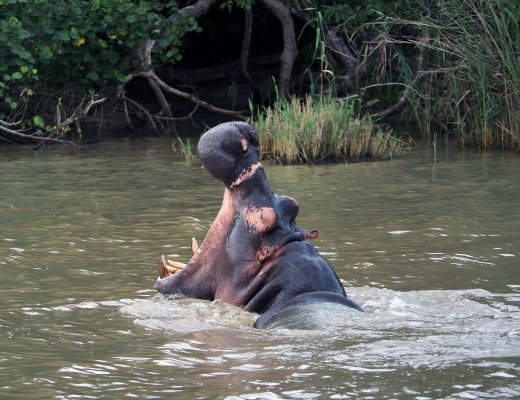
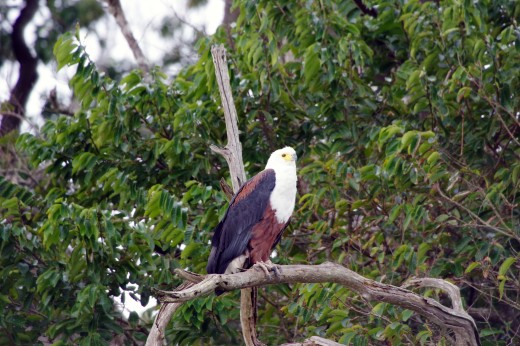
Top 10 things to do in St Lucia
- Take a boat ride on the estuary. From the little dock just outside town, you can choose whether to go on a basic no-frills trip or on a swanky liner with a bar and food and a crew in uniform. We went on an unpretentious boat and had a fantastic adventure up the estuary with a guy who told us all about the birdlife and wildlife we saw. See the video beneath.
- Visit the wetland reserve. Servals and elephants have recently been introduced and there are other African animals too. You can go on safari by day or night, take a guided walk or go on a birdwatching tour. The birdlife here is amazing.
- Hike the Mziki Trail which is three day-long loop walks from the same starting point passing through very different terrain each day: dense forests on sand dunes, grasslands and coastal rock pools. If you walk all three trails, you walk 40 kms (25 miles). The walks are guided and led by an armed national park ranger as there are crocodiles, buffalo, rhino and elephants.
- Want to range further into the wetland park? Trek 52 kilometres (32.3 miles) along the five-day Emoyeni Trail. An armed ranger accompanies you and you walk through dune forest, swamp forest and wetlands, skirt lakes and stroll along a swimmable beach to a bat cave. You stay in a different campsite each night and carry all your own gear. It can be hot and humid so is best done in winter.
- Stroll along the beach. If you are lucky, you may see a hawksbill or loggerhead turtle, dolphin or, in winter, humpback whales. Do not swim here as there are strong rip currents in the sea.
- Love horses? Go horseriding along the coastline.
- If fishing is your passion, you can fish from the beach or take a deep sea fishing trip out in the Indian Ocean.
- Cape Vidal is only 32 kilometres away. Here you can snorkel and in summer, watch loggerhead and leatherback turtles lay their eggs on the beach.
- Visit the Imfolozi section of Hluhluwe-Imfolozi National Park, only 45 kilometres away.
- The dock is a great place to talk to the locals and find out about the culture and wildlife of this fantastic place.
A boat ride on Saint Lucia estuary
